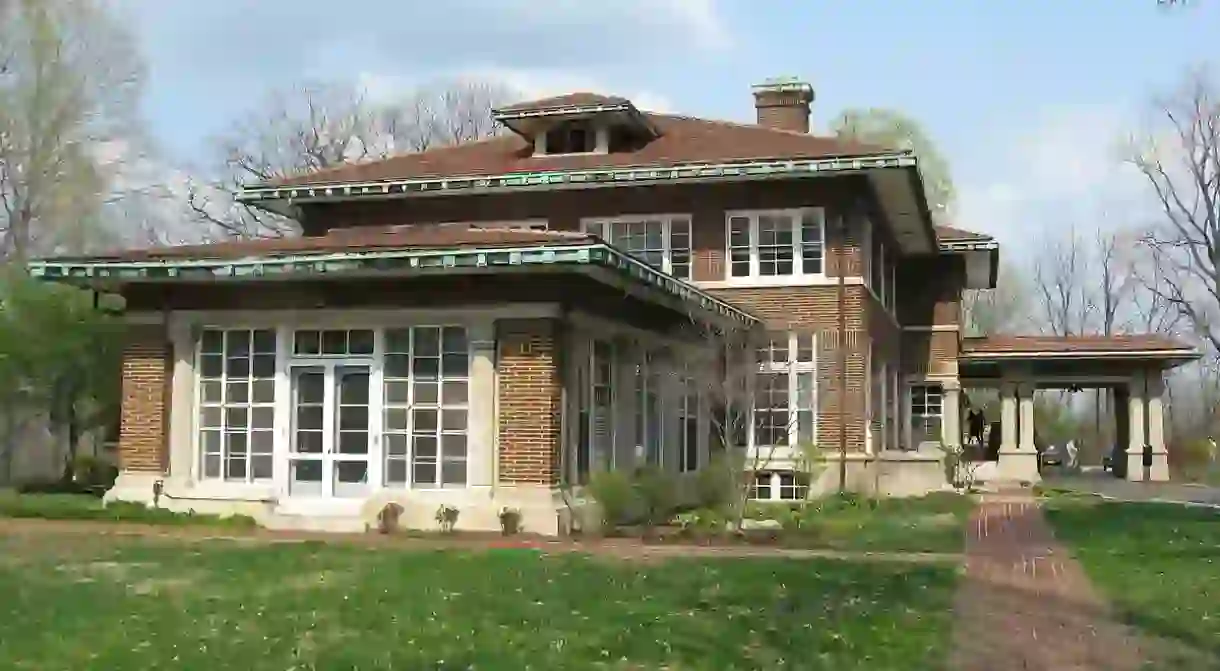A Brief History of the Allison Mansion in Indianapolis, IN

Indianapolis is full of historical buildings and monuments. Much of the downtown area and “Old Northside” district is lined with incredible architectural structures that once played an important role in shaping this Midwestern city. One of the most well-known and significant buildings in Indianapolis is the Allison Mansion, which has a fascinating history.
Backstory
The Allison Mansion was commissioned by James Allison and constructed between 1911 and 1914. With a distinct red-brick style and red-tile roof, this mansion remains an important example of the Arts & Crafts County Era style of architecture. In 1970, this mansion was added to the National Register of Historic Places. Also known as Riverdale, this historic building features a library, porte-cochere (carriage porch), aviary, and sunken conservatory.
This mansion was nicknamed the “House of Wonders” since it contained many amenities and technological advancements that were unheard of at the time. With an elevator, central vacuum system, intercom, automatic lighted closets, and indoor swimming pool, this mansion easily outshone other high-end living spaces in the early 1900s.

Aside from its stunning architectural beauty, this mansion is also important to Indianapolis because of James Allison’s rich ties to the city. Allison was a prominent entrepreneur who invented the Allison Perfection Fountain pen and founded both Prest-O-Life (an automobile headlight manufacturing company) and an automobile company that became known as the Allison Engine Company (now a division of Rolls Royce).
Perhaps his most notable claim to fame is his founding of the Indianapolis Motor Speedway, along with Frank Wheeler and Arthur Newby. This speedway remains the pride and joy of the Circle City, immortalizing Allison’s celebrity status.

Allison Mansion at Marian University
Following Allison’s death in 1928, Marian University acquired the mansion in 1937. It became the prime building of the small college until the mid-1900s. It served as the university’s sole library and hub for many classrooms, administrative offices, and sleeping quarters for the Sisters who owned the private college.
As the university began to expand and grow, classrooms and offices were moved from the Allison Mansion into newer and larger buildings. This well-maintained mansion now serves as a reception hall and event space, while the estate grounds are used as Marian University’s EcoLab.

Hauntings at this Historic Mansion
James Allison’s legendary status in Indianapolis does not just live on because of his rich legacy. In fact, many people claim that following Allison’s death in the late 1920s, his soul never left the building he loved so dearly.
College administrative staff, visitors, and university students all claim that the ghost of James Allison still haunts the mansion. Books and furniture in the library are frequently found rearranged, indicating that this spirit has a lot of opinions about how this particular room should look. Objects like keys also regularly go missing in this mansion and are often found in peculiar places.

Unique Interior Design
The Allison Mansion was designed by two architects: Herbert Bass, who completed the mansion in three years, and William Price, who created the interior design of the mansion. The structure sits along Crooked Creek, and it is nestled upon 64 acres of land, which were cultivated and designed by master landscape architect Jens Jensen.
During construction, Allison had many materials imported from Europe to be used within the mansion. The interior styling is a mixture of Renaissance, Gothic, and Louis XVI designs.













